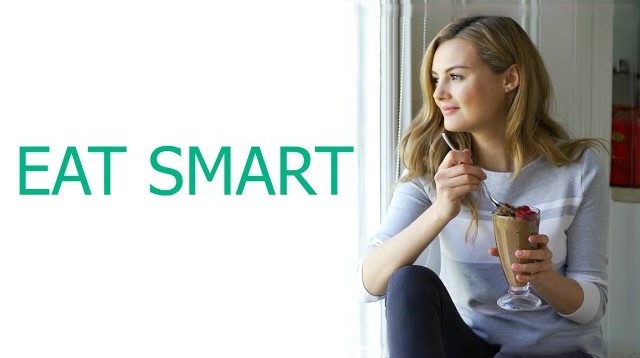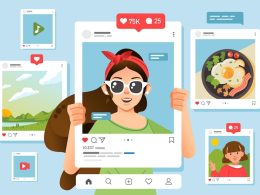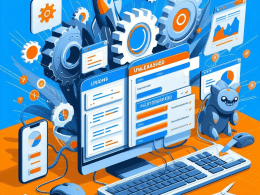Introduction
In today’s fast-paced world, the way we approach food and nutrition is changing. The traditional idea of clean eating is now facing a new contender: smart eating, fueled by the advancements in artificial intelligence (AI) and food technology. The question is no longer just about eating fresh, whole foods. Instead, it’s about how we can use AI to enhance our diets and make smarter food choices.
In this article, we’ll dive deep into the debate of clean eating vs. smart eating. We’ll explore the definitions of each, how technology plays a role in shaping our eating habits, and which approach is best for your health in the age of AI.
What is Clean Eating?

Clean eating has become a buzzword over the past decade. It focuses on eating whole, unprocessed foods—essentially, foods that are as close to their natural state as possible. The clean eating movement promotes foods like fresh vegetables, lean proteins, whole grains, and healthy fats, while cutting out processed snacks, refined sugars, and artificial additives.
The goal of clean eating is to avoid chemicals, preservatives, and other synthetic ingredients that might harm the body. Advocates believe that eating clean helps with weight management, improves energy levels, and reduces the risk of chronic diseases. It’s about making conscious choices to fuel the body with the healthiest, least processed options available.
What is Smart Eating?

On the other hand, smart eating involves using AI-powered nutrition and technology to make informed decisions about what you eat. In this age of digital health, smart eating is not just about consuming the right foods but also about understanding how your body reacts to different foods.
AI and machine learning are now being used to personalize diets based on individual needs, genetic makeup, and even real-time data. Apps and devices track your nutrition, offering insights into how certain foods affect your body, metabolism, and health goals. Smart eating uses data-driven insights to optimize your diet and make choices that align with your personal health objectives.
This method goes beyond eating simply for sustenance; it integrates technology into the process to ensure that every meal is tailored to your unique requirements.
Clean Eating vs. Smart Eating: A Detailed Comparison

Let’s take a closer look at the key differences between clean eating and smart eating to understand the advantages and disadvantages of each approach.
1. Focus on Whole Foods vs. Technological Integration
Clean eating emphasizes consuming whole, natural foods without additives. It’s about choosing fresh vegetables, fruits, and meats that are minimally processed. This approach avoids foods with artificial ingredients or anything that’s too far removed from its original state.
In contrast, smart eating uses AI technology to monitor and optimize your food choices. It doesn’t just rely on the natural state of food; it looks at how different food items interact with your unique physiology. For example, AI can track your blood sugar levels after meals and suggest modifications to better manage your energy levels.
2. Simplicity vs. Customization
Clean eating is simple and easy to follow. The rules are straightforward—eat whole foods, avoid processed foods. This simplicity appeals to many because it doesn’t require advanced technology or detailed knowledge about the science of nutrition.
On the other hand, smart eating offers a higher level of customization. AI systems analyze your lifestyle, goals, and biological data to recommend the best foods for you. With smart eating, the focus is on finding personalized solutions, such as customized meal plans and AI diet plans that adapt as your body changes.
3. Health Benefits and Convenience
While clean eating focuses on the long-term benefits of consuming unprocessed foods, it can be time-consuming to prepare and source these foods. For example, if you are committed to eating only whole foods, you may have to cook most meals from scratch, which could be difficult for busy people.
Smart eating is often seen as more convenient. With the help of food tracking apps, smart food choices can be made in real time, and some apps even suggest meals based on the nutritional needs of your day. Technology makes it easier to manage your diet without needing to spend hours in the kitchen.
4. Flexibility and Adaptation
Another advantage of smart eating is its ability to adapt to your changing needs. Using AI-powered nutrition tools, your diet can change based on your activity levels, sleep patterns, and even your mood. For instance, if you’re feeling stressed, your app might suggest foods that are calming and aid digestion.
Clean eating, on the other hand, has a more rigid structure, with less room for adaptation. While clean eating provides a solid foundation for healthy eating, it doesn’t offer the personalized, flexible nature of smart eating.
How AI is Shaping the Future of Eating

In recent years, AI in diet has become a game-changer. Artificial intelligence can help individuals track their eating habits, understand their nutritional intake, and even predict how certain foods will impact their bodies. Here’s how AI is revolutionizing the world of smart eating:
- Personalized Meal Plans: AI-powered apps can now create customized meal plans based on an individual’s health goals, food preferences, and even medical history. Whether you’re trying to lose weight, gain muscle, or improve your overall health, these tools make it easier to follow a diet that’s right for you.
- Real-Time Nutritional Tracking: Wearables and apps can now provide real-time feedback on your eating habits. These tools track how different foods impact your body, giving you insights on things like digestion, energy levels, and overall well-being.
- Food Recommendations: By analyzing your genetic data and lifestyle, AI can suggest foods that align with your unique needs. For example, if you have a sensitivity to gluten or lactose, AI can recommend alternatives and even point out hidden ingredients in packaged foods.
The Future of Clean Eating vs. Smart Eating

Looking ahead, it seems that both clean eating and smart eating will continue to evolve. With AI technology becoming more advanced, smart eating could become even more personalized and accessible to everyone. For example, we might see AI systems that can create fully customized meal plans or suggest foods based on our health data. However, clean eating will also likely remain popular, as many people prefer to stick to simple, natural foods without the need for technology. The future might see a combination of both approaches, where people use AI to make smart food choices while still prioritizing fresh, whole ingredients in their diets.
Comparative Table: Clean Eating vs. Smart Eating
| Aspect | Clean Eating | Smart Eating |
|---|---|---|
| Definition | Focuses on whole, natural foods | Uses AI and technology to personalize diets |
| Main Goal | To avoid processed foods and additives | To optimize diet based on individual data |
| Customization | Simple, based on food types | Highly customized based on health data |
| Convenience | Requires time and effort to prepare meals | Offers convenience through tech solutions |
| Flexibility | Fixed rules about what to eat | Flexible, can adapt to personal health needs |
| Technology Use | Minimal technology integration | Heavy use of AI for tracking and planning |
| Health Focus | Long-term health through natural foods | Short and long-term health with real-time tracking |
Conclusion
Both clean eating and smart eating offer valuable approaches to improving our health, but they cater to different needs. Clean eating is perfect for those who want to stick to a natural, no-frills diet. It’s straightforward, easy to follow, and doesn’t rely on technology. However, for those looking for a more personalized and data-driven approach, smart eating could be the future. With AI, individuals can optimize their diets based on real-time insights and health goals, making it a more flexible and adaptable option.











